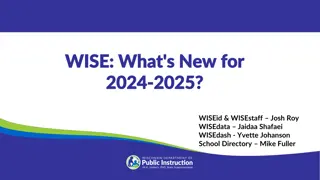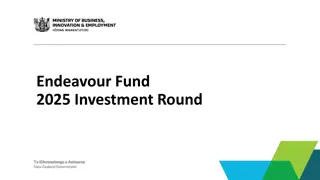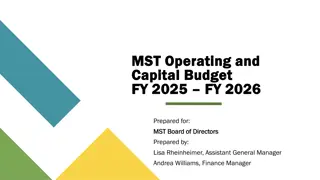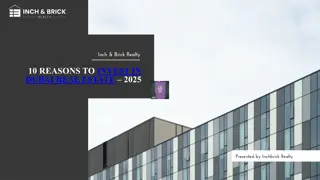
Understanding Present Simple Tense Usage
Learn about the present simple tense, including its definition, usage, formation, and examples. Understand when to use this tense for facts, routines, habits, general truths, and scheduled events. Enhance your English language skills with clear explanations and practical examples.
Download Presentation

Please find below an Image/Link to download the presentation.
The content on the website is provided AS IS for your information and personal use only. It may not be sold, licensed, or shared on other websites without obtaining consent from the author. If you encounter any issues during the download, it is possible that the publisher has removed the file from their server.
You are allowed to download the files provided on this website for personal or commercial use, subject to the condition that they are used lawfully. All files are the property of their respective owners.
The content on the website is provided AS IS for your information and personal use only. It may not be sold, licensed, or shared on other websites without obtaining consent from the author.
E N D
Presentation Transcript
Medical physics Department Medical physics Department Subject: English Language Subject: English Language Class: Third Class: Third Lecturer: MSC. Lecturer: MSC. Sakina Sakina Hussain Hussain Alsuwaydi Alsuwaydi Lecture: ( Lecture: ( 2 2 ) ) present simple, present continuous, have/have got Study Year: 2024-2025
What is the Present Simple Tense? Description: The Present Simple Tense is used to talk about: 1. Facts 2. Routines and habits 3. General truths 4. Scheduled events Example Sentences: The sun rises in the east. (Fact) I drink coffee every morning. (Routine)
Forming the Present Simple (Affirmative) Structure: Subject + Base Verb (+ s/ Subject + Base Verb (+ s/es es) ) Examples: I play football. (No -s with I ) She plays tennis. (Add -s for he/she/it) We read books. (No -s with we ) Tip: Only add -s or -es with singular third-person subjects (he, she, it).
Spelling Rules for Third Person Singular (he/she/it) Add -s or -es: 1. Add -s to most verbs: play plays 2. Add -es for verbs ending in -ch, -sh, -ss, -x, -o: watch watches go goes 3. Change -y to -ies for verbs ending in a consonant + -y: study studies Examples: He teaches English. She studies hard.
Forming the Present Simple (Negative) Structure: Subject + do/does + not + Base Verb Subject + do/does + not + Base Verb Examples: I do not (don t) eat meat. He does not (doesn t) like chocolate. They do not (don t) watch TV. Tip: Use does not for he/she/it and do not for other subjects.
Forming the Present Simple (Questions) Structure: Do/Does + Subject + Base Verb? Do/Does + Subject + Base Verb? Examples: Do you like pizza? Does she work on Sundays? Do they play basketball? Tip: Use does with he/she/it and do with other subjects.
When to Use the Present Simple When to Use the Present Simple 1. Facts and General Truths: Examples: Water boils at 100 C. The earth orbits around the sun. 4. Feelings, Opinions, and States: Examples: I love chocolate. She believes in hard work. 2. Habits and Routines: Examples: I go to the gym every Monday. She always drinks tea in the morning. 3. Scheduled Events (Future Reference): Examples: The train leaves at 8:00 AM. The class starts at 9:00 AM.
Common Mistakes to Avoid 1. Forgetting the -s with he/she/it: Incorrect: She walk to school. Correct: She walks to school. 2. Using do/does incorrectly in questions: Incorrect: Does she likes pizza? Correct: Does she like pizza? 3. Confusing present simple with present continuous: Incorrect: I am walk to school every day. Correct: I walk to school every day.
Practice Time Activity: 1. Fill in the blanks: He __ (like) chocolate. They __ (not/go) to the park on Sundays. 2. Correct the mistakes: She go to school every day. Do he play football?
Practice Time Activity: 1. Fill in the blanks: He __ (like) chocolate. (Answer: likes) They __ (not/go) to the park on Sundays. (Answer: do not go) 2. Correct the mistakes: She go to school every day. (Correct: She goes to school every day.) Do he play football? (Correct: Does he play football?)
What is the Present Continuous Tense? Description: The Present Continuous Tense is used to describe: 1. Actions happening right now 2. Temporary actions or situations 3. Future plans or arrangements Example Sentences: I am talking to you. (Right now) She is staying with her friend this week. (Temporary situation) They are meeting us at 7 PM. (Future plan)
Forming the Present Continuous (Affirmative) Structure: Subject + am/ is/ are + verb Subject + am/ is/ are + verb- -ing ing Examples: I am working. He is eating dinner. They are studying English. Tip: Use am with I Use is with he, she, it Use are with we, you, they, I
Forming the Present Continuous (Negative) Structure: Subject + am/ is/ are + not + verb Subject + am/ is/ are + not + verb- -ing ing Examples: I am not working. She is not watching TV. They are not playing football. Tip: Not is added after the verb am/is/are to make the sentence negative.
Forming the Present Continuous (Questions) Structure: Am/ Is/ Are + subject + verb Am/ Is/ Are + subject + verb- -ing ing? ? Examples: Are you listening? Is he cooking? Are they coming to the party? Tip: Start the question with am/is/are followed by the subject and verb-ing.
When to Use the Present Continuous 1. Actions Happening Right Now (at the moment of speaking): Examples: I am reading a book. (Action happening right now) She is writing an email. (Action happening right now) 2. Temporary Actions or Situations: Examples: He is living in Paris for a few months. (Temporary situation) I am working from home today. (Temporary action)
3. Future Plans or Arrangements: Examples: We are visiting our grandparents next weekend. (Future plan) She is meeting her friend at 4 PM. (Future arrangement) 4. Changing or Developing Situations: Examples: The weather is getting colder. The company is growing rapidly.
Common Spelling Rules for Verbs in Present Continuous 1. Add -ing to most verbs: Examples: eat eating play playing 2. Verbs ending in -e lose the -e before adding -ing: Examples: make making dance dancing 3. Double the final consonant for one-syllable verbs ending in a single consonant: Examples: run running sit sitting
Common Mistakes to Avoid 1. Using the wrong form of the verb to be : Incorrect: She am working. Correct: She is working. 2. Not adding -ing to the verb: Incorrect: She is play basketball. Correct: She is playing basketball. 3. Confusing the Present Continuous with the Present Simple: Incorrect: I am go to school every day. Correct: I go to school every day. -Use Present Continuous for actions happening right now, not for habits.
Practice: Activity: Fill in the blanks: They __ (study) for the test. Are you __ (watch) TV now? 2. Correct the mistakes: She are cooking dinner. We is working hard today.
Practice: Activity: Fill in the blanks: They __ (study) for the test. (Answer: are studying) Are you __ (watch) TV now? (Answer: Are you watching) 2. Correct the mistakes: She are cooking dinner. (Correct: She is cooking dinner.) We is working hard today. (Correct: We are working hard today.)
Have and Have Got - Have and Have got both express possession or relationships.. -Both can express possession or relationships. What is the Difference Between Have and Have Got ? 1-Usage in sentence: - Have is more commonly used in formal or neutral English: I have a dog. - Have got is more common in casual or informal English: I have got a dog. 2-Grammer rules: - Have is used as a main verb and often follows auxiliary verbs like do or does. Example: Does she have a pen? - Have got is treated like a present perfect tense and usually doesn t need an auxiliary verb. Example: Have they got a car?
4. Contexts Where Have Got is Not Used - Have got is typically used for possession, relationships, or describing states, not actions. . I ve got two brothers. (correct) I ve got breakfast at 8 a.m. (Incorrect: Use I have breakfast at 8 a.m.) Quick Tip: -Use have for formal situations or when teaching standard grammar. -Use have got in casual conversations, especially in British English settings.
Have Form and Usage (Affirmative) Form: Subject + have + object Subject + have + object Examples: I have a dog. She has a brother. They have a house. Tip: -Have is used with I, you, we, they -Has is used with he, she, it
Have Got Form and Usage (Affirmative) Form: Subject + have got + object Subject + have got + object Examples: I have got a car. She has got a cat. They have got a computer. Tip: Have got is used the same way as have but is more common in British English.
Negative Form of Have and Have Got For Have : Subject + do/does + not + have + object Subject + do/does + not + have + object Examples: I do not have a bike. He does not have a job. They do not have time. For Have Got : Subject + have/has + not + got + object Subject + have/has + not + got + object Examples: I haven t got a pencil. She hasn t got a pet. They haven t got a car.
Question Forms of Have and Have Got For Have : Do/Does + Subject + Have + Object? Do/Does + Subject + Have + Object? Examples: Do you have a phone? Does she have a computer? Do they have children? For Have Got : Have/Has + Subject + Got + Object? Have/Has + Subject + Got + Object? Examples: Have you got a bike? Has he got a camera? Have they got a house?
When to Use Have and Have Got 1. Possession: Have: I have a pen. Have Got: I have got a pen. 2. Relationships or States: Have: I have a brother. Have Got: I have got a brother. 3. Questions about Possession or Relationships: Have: Do you have a computer? Have Got: Have you got a computer?
When to Use Have for Other Meanings Have is used for more than just possession. It is used in various expressions: 1. Have breakfast/lunch/dinner: I have breakfast at 8 AM. 2. Have a good time: They had a great time at the party. 3. Have a look: Please have a look at this book. Examples: I have lunch at noon. She has a cold.
Common Mistakes to Avoid 1. Using Have Got in Formal Writing: Incorrect: I have got a meeting tomorrow. (In formal English, use have. ) Correct: I have a meeting tomorrow. 2. Mixing Have and Have Got in Questions: Incorrect: Has you got a phone? Correct: Have you got a phone?
practice Time practice Time Activity: 1. Fill in the blanks: They __ (have) a dog. She __ (have got) a brother. 2. Correct the mistakes: He have got a bicycle. Do you has a book?
practice Time practice Time Activity: 1. Fill in the blanks: They __ (have) a dog. (Answer: have) She __ (have got) a brother. (Answer: has got) 2. Correct the mistakes: He have got a bicycle. (Correct: He has got a bicycle.) Do you has a book? (Correct: Do you have a book?)















